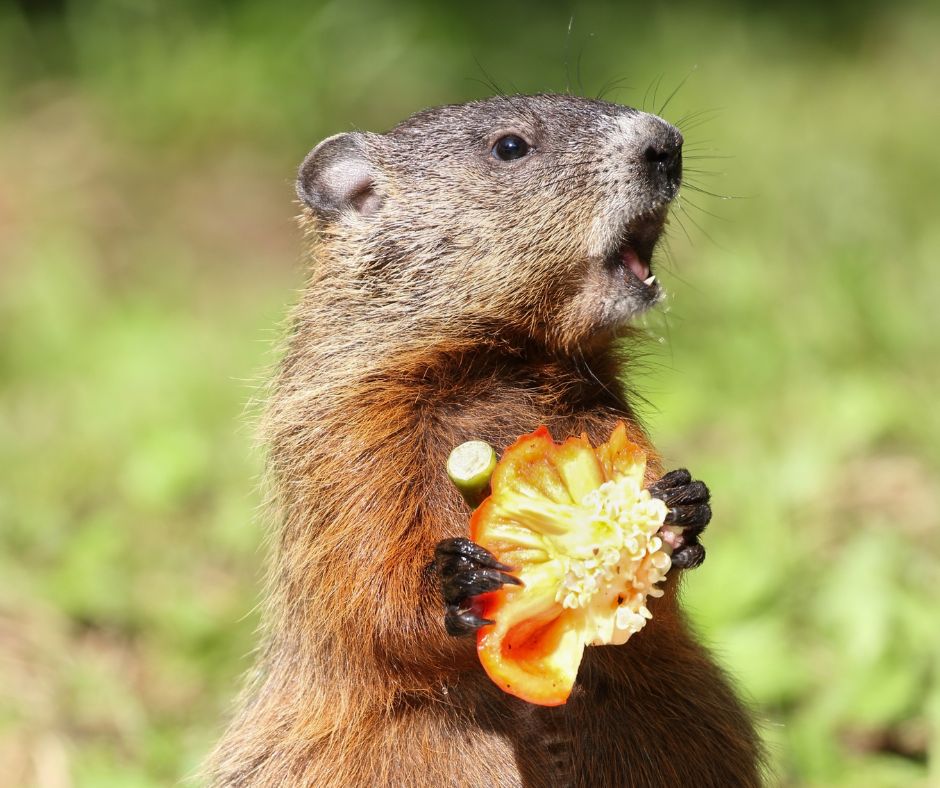 Eco-Friendly and Humane Wildlife Deterrent Methods for Your Garden
Eco-Friendly and Humane Wildlife Deterrent Methods for Your Garden
Eco-Friendly and Humane Wildlife Deterrent Methods for Your Garden
Spring and Summer are the gardening seasons, but homeowners are often frustrated by the presence of destructive critters like groundhogs and rabbits that can wreak havoc in your garden as they burrow underneath your plants and feast on your crops. Groundhogs and rabbits aren’t the only ones, as raccoons, squirrels, skunks, opossums and even deer are all known to get into gardens. Poisoning these critters is not only illegal, but it can also be very destructive on the local ecosystem. The best way to get rid of wildlife in your garden is through trapping and removal, wildlife fencing/barriers, and habitat modification. Thankfully, Westchester Wildlife can help. We offer the best wildlife trapping and removal services in the Westchester area, and we can also provide you with wildlife barriers. Contact us today to get started at (800) 273-6673!
Garden Pests
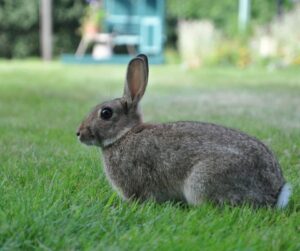 There are several types of wildlife that you might find destroying your garden, burrowing underneath your plants and eating your fresh vegetables. Groundhogs are known to dig underneath gardens, disrupting root structures and displacing plants. Groundhogs are binge eaters, and will decimate a garden filled with delicious vegetables overnight. Rabbits will also dig into the ground, and they will damage and consume flowers, peas, beans, beets and more. While groundhogs and rabbits are the two most prevalent garden pests, homeowners also often have to contend with squirrels, raccoons, opossums and deer, all of which are omnivores and will stop by your garden for a quick snack.
There are several types of wildlife that you might find destroying your garden, burrowing underneath your plants and eating your fresh vegetables. Groundhogs are known to dig underneath gardens, disrupting root structures and displacing plants. Groundhogs are binge eaters, and will decimate a garden filled with delicious vegetables overnight. Rabbits will also dig into the ground, and they will damage and consume flowers, peas, beans, beets and more. While groundhogs and rabbits are the two most prevalent garden pests, homeowners also often have to contend with squirrels, raccoons, opossums and deer, all of which are omnivores and will stop by your garden for a quick snack.
Trapping and Removal Services
Having wildlife damaging your garden can be frustrating. Maintaining a garden is hard work, and all that work can be ruined by groundhogs or rabbits in a single night. Poisoning groundhogs and rabbits is not only illegal, but very dangerous, as that poison can enter the ecosystem and get into the water supply. Trapping groundhogs yourself can be difficult, as they are very clever and can easily evade less-experienced trappers. The best way to remove wildlife from your property and prevent them from entering your garden is to contact the licensed experts at Westchester Wildlife. Our technicians are highly-trained and experienced in trapping groundhogs, and we can safely and effectively remove them from your property. We can also trap and remove raccoons, squirrels, skunks, and any other critter causing trouble in your garden.
Wildlife Fencing Services
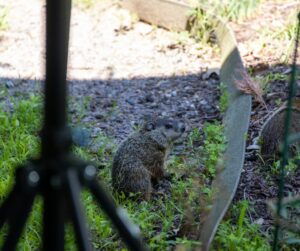 While trapping and removal services can get rid of any current critters causing problems on your property, this doesn’t protect against more animals coming back in the future. You can trap and remove a groundhog, but the next groundhog will come around eventually and decimate your plants. This is why preventative measures for garden nuisance wildlife are so important. One of the most important measures you can take for keeping groundhogs and other animals out of your garden is to install wildlife fencing or wildlife barriers around the perimeter of your yard, garden, or both. Mesh wildlife fencing can prevent critters from gaining entrance, and burying this fencing deep enough in the ground can prevent burrowing groundhogs from digging underneath it. Westchester Wildlife can install wildlife fencing and wildlife barriers anywhere on your property to keep critters from getting in and raiding your garden. We can install these barriers alongside the entire perimeter of your yard, or just along the perimeter of your garden. No matter what your wildlife fencing needs are, Westchester Wildlife can help.
While trapping and removal services can get rid of any current critters causing problems on your property, this doesn’t protect against more animals coming back in the future. You can trap and remove a groundhog, but the next groundhog will come around eventually and decimate your plants. This is why preventative measures for garden nuisance wildlife are so important. One of the most important measures you can take for keeping groundhogs and other animals out of your garden is to install wildlife fencing or wildlife barriers around the perimeter of your yard, garden, or both. Mesh wildlife fencing can prevent critters from gaining entrance, and burying this fencing deep enough in the ground can prevent burrowing groundhogs from digging underneath it. Westchester Wildlife can install wildlife fencing and wildlife barriers anywhere on your property to keep critters from getting in and raiding your garden. We can install these barriers alongside the entire perimeter of your yard, or just along the perimeter of your garden. No matter what your wildlife fencing needs are, Westchester Wildlife can help.
Habitat Modification:
 Habitat modification is a highly effective strategy for keeping groundhogs, rabbits, and other critters out of your vegetable garden. To begin, it’s crucial to eliminate any potential hiding places. Clear away brush piles, tall grass, and accumulated debris that provide cover for these animals. Regularly mow the lawn around the garden to reduce tall grass and remove any unnecessary vegetation. Removing potential food sources outside the garden is also essential; promptly clean up fallen fruits, nuts, and other edible debris that could attract these critters.
Habitat modification is a highly effective strategy for keeping groundhogs, rabbits, and other critters out of your vegetable garden. To begin, it’s crucial to eliminate any potential hiding places. Clear away brush piles, tall grass, and accumulated debris that provide cover for these animals. Regularly mow the lawn around the garden to reduce tall grass and remove any unnecessary vegetation. Removing potential food sources outside the garden is also essential; promptly clean up fallen fruits, nuts, and other edible debris that could attract these critters.
Another key tactic is to incorporate plants that naturally repel pests. Planting marigolds, garlic, and onions around the perimeter of your garden can serve as a natural deterrent due to their strong scents, which many animals find unappealing. Additionally, you can introduce herbs like rosemary and mint, known for their repelling properties.
Maintaining a clean and tidy garden is also critical. Regular weeding and pruning not only promote plant health but also reduce the garden’s appeal to pests. Composting properly and ensuring that garden waste is disposed of correctly can further minimize attractants. By implementing these habitat modifications, you create an environment that is less inviting and less accessible to groundhogs, rabbits, and other critters, thus protecting your vegetable garden from potential damage.
Best Wildlife Trapping in Westchester, NY
Groundhogs, rabbits, deer, raccoons, squirrels and skunks are destructive critters that can dig inside your vegetable garden, ripping up your plants and disrupting your root structure as well as your garden soil. Many of these critters will also eat your fresh vegetables, ruining all your hard work. Thankfully, there are ways to remove and deter these critters. Westchester Wildlife offers groundhog trapping and removal services to remove these destructive pests from your yard and garden. We can also provide you with wildlife fencing services to keep animals from returning to your garden once they have been trapped and removed. In addition, forms of habitat modification like keeping grass cut short, planting natural repellents like mint and cleaning up all fallen fruit, seeds or nuts can help prevent critters like groundhogs and rabbits from seeing your yard as a potential food source.
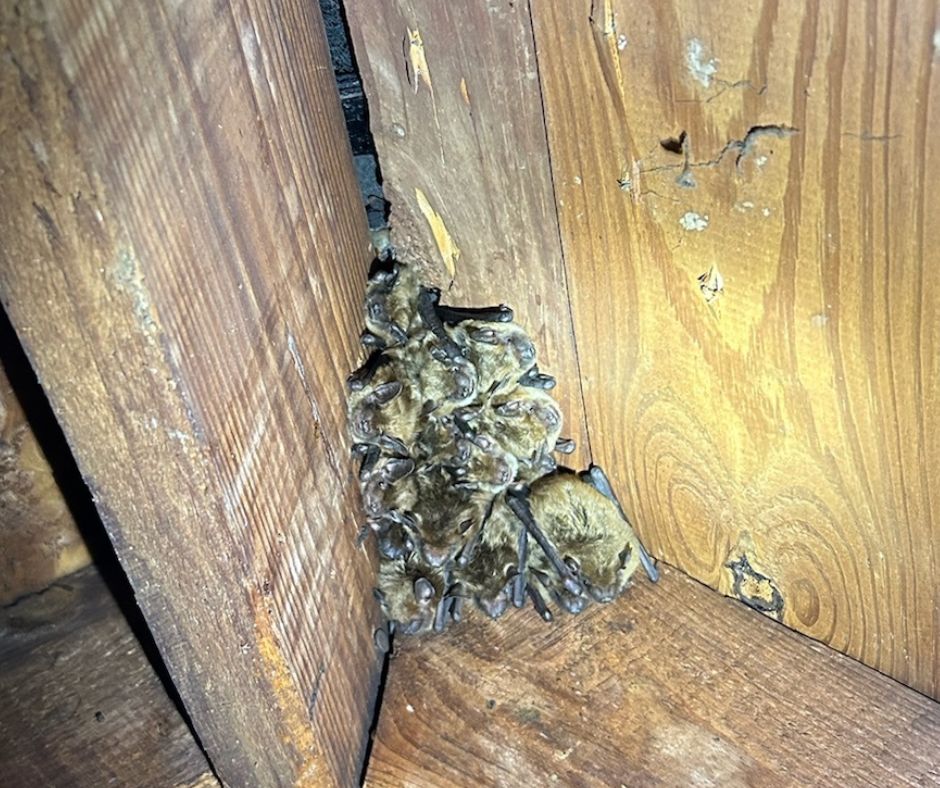 The Benefits of Installing Bat Houses for Natural Pest Control
The Benefits of Installing Bat Houses for Natural Pest Control
The Benefits of Installing Bat Houses for Natural Pest Control
Bats are associated with diseases like rabies and histoplasmosis, and they are the last thing you want in your attic. However, bats can be a beneficial species to have on your property when they aren’t in your house, as they serve as a means of natural pest control. Natural pest control is an effective and environmentally friendly way to manage insect populations. Bats play a crucial role in this process due to their diet, which primarily consists of insects. Installing bat houses can encourage these bats to nest on your property, providing a habitat for bats and helping reduce the need for chemical pesticides. In addition, the presence of bat houses on your property can lower the likelihood of these critters nesting within your attic. These simple structures offer a safe place for bats to roost and raise their young, supporting local ecosystems and promoting biodiversity.
Understanding Bats and Their Role in Pest Control
Westchester is home to several common bat species, including the Little Brown Bat and the Big Brown Bat. These bats are incredibly effective natural pest controllers due to their diet, which mainly consists of insects such as mosquitoes, moths, beetles, and flies. A single bat can consume thousands of insects in one night, significantly reducing pest populations around your property. This natural method of pest control helps maintain ecological balance and reduces the need for chemical pesticides, making bats valuable allies in our environment.
Advantages of Installing Bat Houses
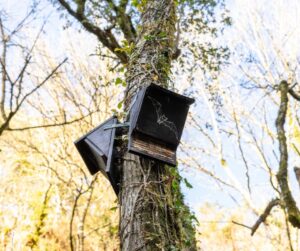 Bat houses offer a natural solution to pest control, allowing homeowners to reduce insect populations without relying on harmful chemicals. Bats feed on a wide variety of insects, helping to keep your yard and garden free from pests. In addition, by supporting bat populations, bat houses contribute to maintaining ecological balance. Bats play a crucial role in pollination and seed dispersal, further enhancing biodiversity and the health of local ecosystems.
Bat houses offer a natural solution to pest control, allowing homeowners to reduce insect populations without relying on harmful chemicals. Bats feed on a wide variety of insects, helping to keep your yard and garden free from pests. In addition, by supporting bat populations, bat houses contribute to maintaining ecological balance. Bats play a crucial role in pollination and seed dispersal, further enhancing biodiversity and the health of local ecosystems.
Providing bat houses gives bats a safe and dedicated place to roost, reducing the likelihood of them nesting in your home’s attic or walls. Bats in the attic can pose health risks due to guano accumulation and potential for disease transmission, so offering a bat house protects both you and the bats. If you have bats getting inside your attic, contact Westchester Wildlife for bat removal services at (800) 273-6673.
Choosing and Installing the Right Bat House
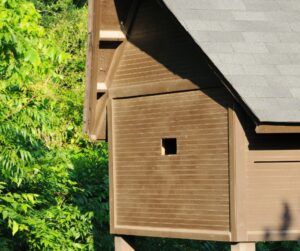 There are various types of bat houses designed to meet different needs and preferences. Single-chamber bat houses are simple and ideal for smaller bat populations, while multi-chamber bat houses provide more space and are suitable for larger colonies. Rocket boxes and nursery houses offer specialized designs for different bat behaviors and colony structures. The location of your bat house is critical for attracting bats. Install the bat house at least 12-20 feet above the ground on a pole, building, or tree. Proximity to water sources and the presence of nearby trees for bats to navigate can also increase the chances of occupancy.
There are various types of bat houses designed to meet different needs and preferences. Single-chamber bat houses are simple and ideal for smaller bat populations, while multi-chamber bat houses provide more space and are suitable for larger colonies. Rocket boxes and nursery houses offer specialized designs for different bat behaviors and colony structures. The location of your bat house is critical for attracting bats. Install the bat house at least 12-20 feet above the ground on a pole, building, or tree. Proximity to water sources and the presence of nearby trees for bats to navigate can also increase the chances of occupancy.
To make your bat house more appealing, ensure it is painted a dark color to absorb heat, which bats need for roosting. Avoid placing the bat house near bright lights, as bats prefer darker, quieter areas. Providing a water source nearby, such as a pond or stream, can also attract bats. Additionally, avoid using pesticides in the vicinity to maintain a healthy environment for the bats. Regularly check and maintain the bat house to ensure it remains in good condition, free from predators and pests.
Maintenance and Monitoring
Proper maintenance of your bat house ensures it remains a safe and inviting roosting site. Inspect the bat house annually for any damage or wear, and repair or replace it as needed. Clean out any debris, insects, or bird nests that might have settled in the house. Make sure the bat house is securely mounted and stable.
Keep the bat house free from predators by installing predator guards if necessary. Maintain the surrounding environment by avoiding pesticide use and ensuring nearby water sources are clean. Regular maintenance and monitoring help ensure the bat house continues to provide a beneficial habitat for bats, contributing to effective natural pest control.
Bat Removal in Westchester County
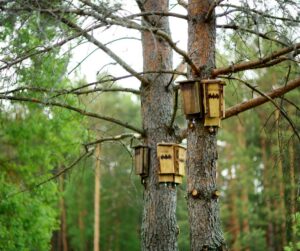 Installing bat houses offers natural pest control by providing bats with a safe roosting spot. This reduces the need for chemical pesticides, supports local ecosystems, and keeps bats out of your home. Embrace the ecological benefits of bat houses and enjoy a chemical-free solution to pest control. By installing a bat house, you contribute to environmental sustainability and create a healthier habitat for local wildlife. If bats have taken up residence in your attic, Westchester Wildlife can help. Our team specializes in safe and humane bat removal, ensuring your home is bat-free. Contact us at (800) 273-6673 for professional bat removal services in Westchester County.
Installing bat houses offers natural pest control by providing bats with a safe roosting spot. This reduces the need for chemical pesticides, supports local ecosystems, and keeps bats out of your home. Embrace the ecological benefits of bat houses and enjoy a chemical-free solution to pest control. By installing a bat house, you contribute to environmental sustainability and create a healthier habitat for local wildlife. If bats have taken up residence in your attic, Westchester Wildlife can help. Our team specializes in safe and humane bat removal, ensuring your home is bat-free. Contact us at (800) 273-6673 for professional bat removal services in Westchester County.
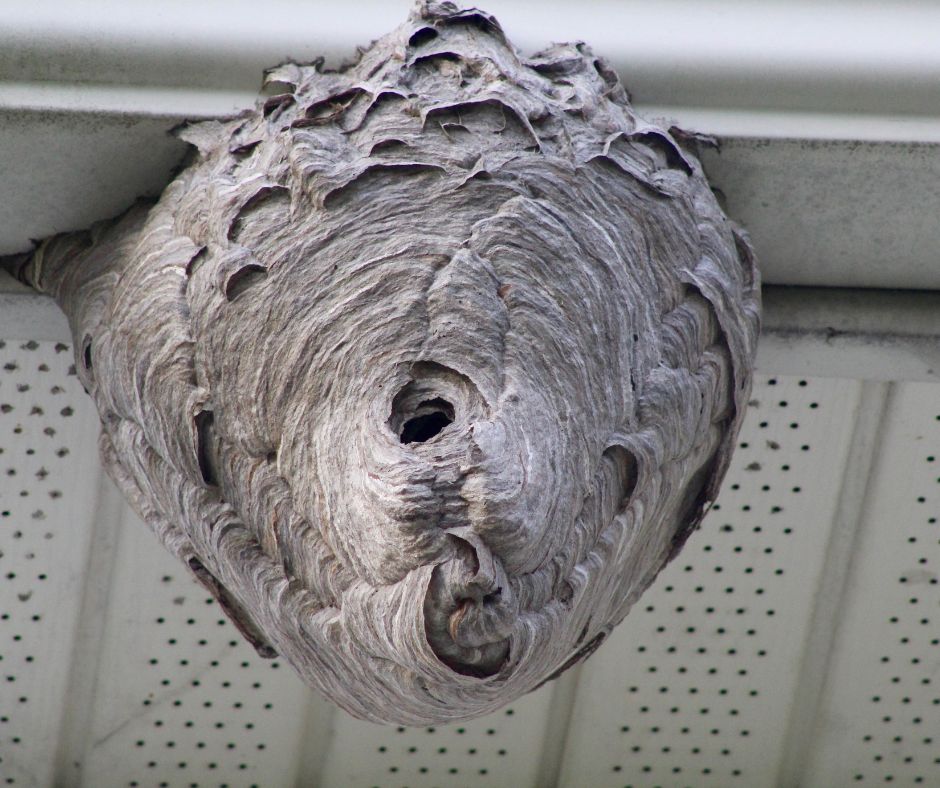 Wasps to Watch Out for This Spring in Westchester, NY
Wasps to Watch Out for This Spring in Westchester, NY
Wasps to Watch Out for This Spring in Westchester, NY
As the weather begins to warm up in Westchester County, stinging insects like wasps are emerging to build their nests. Unfortunately, you often find wasps building their nests on your deck or porch, or even sometimes inside your garage or attic! Don’t worry, Westchester Wildlife can help. We can remove all types of wasps and wasp nests from your property in Westchester County, Putnam County and Dutchess County!
Paper Wasps in Westchester, NY
 Paper wasps are a large species of wasp, typically around 3/4th of an inch long, colored black and yellow with hints of brown and orange. These wasps can be easily identified by a very thin waist between their thorax and abdomen, and their long legs that hang down while they fly. Paper wasps are named for the nests that they create out of chewed wood, chewed paper and saliva, which they construct into open-celled nests that are typically upside-down in an umbrella shape, hanging off of structures like porches, lawn furniture, decks, open vents, and even sometimes inside garages and attics. Paper wasps are known to deliver a powerful, painful sting when they feel threatened.
Paper wasps are a large species of wasp, typically around 3/4th of an inch long, colored black and yellow with hints of brown and orange. These wasps can be easily identified by a very thin waist between their thorax and abdomen, and their long legs that hang down while they fly. Paper wasps are named for the nests that they create out of chewed wood, chewed paper and saliva, which they construct into open-celled nests that are typically upside-down in an umbrella shape, hanging off of structures like porches, lawn furniture, decks, open vents, and even sometimes inside garages and attics. Paper wasps are known to deliver a powerful, painful sting when they feel threatened.
Yellowjackets in Westchester, NY
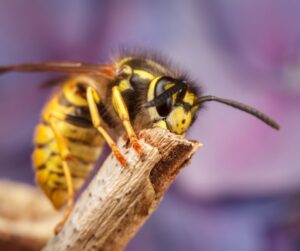 Yellowjackets are a smaller species of wasp, known for their bright yellow and black coloration. Yellow jackets are known to be very aggressive, and will also deliver a powerful, painful sting when threatened. Yellow jackets also give off a pheromone that signals other yellow jackets to come swarm and attack. Yellow jackets build multi-tiered nests that are protected by layers of chewed paper paste, giving the nests a rounder appearance than the open-celled paper wasp nest. Yellow jackets are also known to build their nests underground, especially alongside home foundations. If you see yellow jackets flying into the ground near your foundation, these bugs have likely taken over an abandoned animal burrow and are nesting underground. Yellow jackets also nest inside tree hollows, empty buildings, on the exterior corners of homes, inside vents, and sometimes, even inside attics or wall voids.
Yellowjackets are a smaller species of wasp, known for their bright yellow and black coloration. Yellow jackets are known to be very aggressive, and will also deliver a powerful, painful sting when threatened. Yellow jackets also give off a pheromone that signals other yellow jackets to come swarm and attack. Yellow jackets build multi-tiered nests that are protected by layers of chewed paper paste, giving the nests a rounder appearance than the open-celled paper wasp nest. Yellow jackets are also known to build their nests underground, especially alongside home foundations. If you see yellow jackets flying into the ground near your foundation, these bugs have likely taken over an abandoned animal burrow and are nesting underground. Yellow jackets also nest inside tree hollows, empty buildings, on the exterior corners of homes, inside vents, and sometimes, even inside attics or wall voids.
Bald Faced Hornets in Westchester, NY
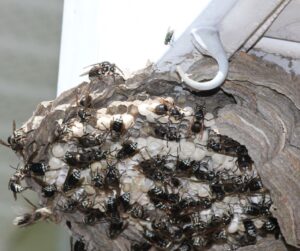 Bald-faced hornets are not actually hornets, but are instead a larger species of yellowjacket. Bald-faced hornets are named for the white markings on their head, legs, thorax and abdomen. If you see a black and white stinging insect flying around your yard in Westchester, you most likely have a bald-faced hornet nest on your property. Bald-faced hornet nests are rounded, gray and papery, made out of chewed cellulose material and saliva. These nests are often located within trees or shrubbery, and can also be located high-up on the eaves of homes, and sometimes even inside attics, garages and wall voids. Bald-faced hornets can also deliver a painful sting when they feel as if their nests are threatened.
Bald-faced hornets are not actually hornets, but are instead a larger species of yellowjacket. Bald-faced hornets are named for the white markings on their head, legs, thorax and abdomen. If you see a black and white stinging insect flying around your yard in Westchester, you most likely have a bald-faced hornet nest on your property. Bald-faced hornet nests are rounded, gray and papery, made out of chewed cellulose material and saliva. These nests are often located within trees or shrubbery, and can also be located high-up on the eaves of homes, and sometimes even inside attics, garages and wall voids. Bald-faced hornets can also deliver a painful sting when they feel as if their nests are threatened.
How Do I Get Rid of Wasps in Westchester, NY?
Wasps are very aggressive insects that will sting and swarm when they feel as if their nests are in danger, and wasp stings can cause life-threatening allergic reactions in some people. Because wasp nests are so dangerous, you should never attempt to remove them yourself. The best way to get rid of wasps in your yard or in your home in Westchester is to contact the licensed experts at Westchester Wildlife. Our technicians have years of experience dealing with wasp nest removal, and we can ensure the nests are removed and your wasp infestation is eliminated without any stinging incidents. Contact us today to get started at (914) 760-5713!
Best Wasp Control and Wasp Nest Removal Service in Westchester, NY
As spring arrives in Westchester County, so do the buzzing inhabitants that can quickly become unwelcome guests: wasps. Paper wasps, yellow jackets, and bald-faced hornets pose not only a nuisance but also a potential threat with their painful stings that can cause dangerous allergic reactions. Recognizing the signs of their presence, from the characteristic nests to their distinctive markings, is crucial for quick action. Whether these insects have nested on your porch, in your garage, or even underground, seeking professional assistance from experts like Westchester Wildlife is the safest and most effective solution. With our expertise, you can rid your property of these stinging insects without risking harm to yourself or your loved ones. Don’t let wasps take over your yard—reach out to specialists like Westchester Wildlife today, and reclaim your outdoor space and peace of mind.
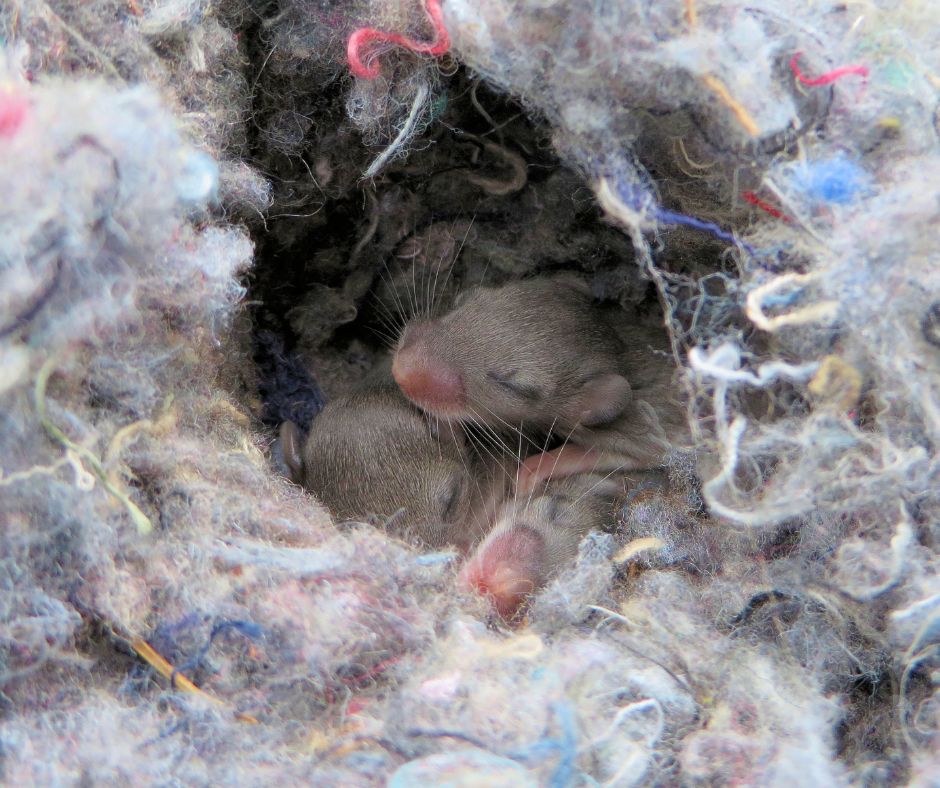 What Attracts Mice To Your Home in Westchester?
What Attracts Mice To Your Home in Westchester?
What Attracts Mice To Your Home in Westchester?
Mice are tiny, destructive pests known for spreading diseases, raiding pantries, gnawing on everything in sight, and leaving behind their urine and droppings wherever they go. But what actually creates the conditions that allow mice to thrive? What brings mice to your house, and what keeps them coming back? Mice are attracted to vulnerable food sources, ample shelter, moisture, and plenty of nesting material. If you have mice infesting your home in Westchester County, don’t worry – Westchester Wildlife can help. We offer the best mice control solutions in the Westchester County area.
Foods That Attract Mice
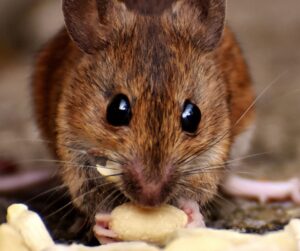 Mice love dry, prepackaged food like cereal, grains, rice, nuts and seeds. If you have this kind of food stored in paper or soft plastic bags, mice will easily chew right through it to get at the food inside. The best way to keep mice away from these products is to store them within a sealed, airtight, hard plastic container. Mice are also often attracted to the home because of left-out pet food. Dog or cat kibble left out in a bowl for long periods of time provide the perfect quick snack for a mouse, so always make sure you put away and store pet food properly.
Mice love dry, prepackaged food like cereal, grains, rice, nuts and seeds. If you have this kind of food stored in paper or soft plastic bags, mice will easily chew right through it to get at the food inside. The best way to keep mice away from these products is to store them within a sealed, airtight, hard plastic container. Mice are also often attracted to the home because of left-out pet food. Dog or cat kibble left out in a bowl for long periods of time provide the perfect quick snack for a mouse, so always make sure you put away and store pet food properly.
Prepackaged dry food isn’t the only kind of food that attracts mice, however. Mice love foods high in fat, protein and sugar, so they will go after deli meat, chocolate, bacon, butter, and fruit that have been left out. Grease stains, spills and crumbs in the kitchen also can bring in rodents like mice.
When mice get into your food supplies or crawl around on your food preparation surfaces, they will often leave behind urine, droppings and other contaminants which can spread illnesses like hantavirus, salmonella, E. coli and tularemia. Keeping all food products stored in sealed, airtight containers and immediately cleaning up all crumbs and spills can aid greatly in keeping rodents away from your home.
Clutter and Tall Grass
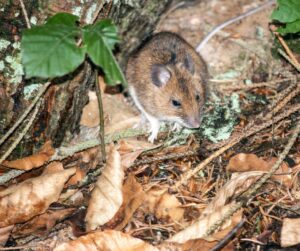 Mice are natural prey animals, hunted by other animals like snakes, cats, birds of prey and more. Because they have so many predators, mice are not comfortable being out in the open. Mice are much more likely to hang out inside tall grass and heavy areas of clutter, because they feel protected. If your grass is tall and uncut, this can make your yard a safe haven for mice. If your basement is full of clutter, this can also make your home more valuable to mice who want to live somewhere they feel protected.
Mice are natural prey animals, hunted by other animals like snakes, cats, birds of prey and more. Because they have so many predators, mice are not comfortable being out in the open. Mice are much more likely to hang out inside tall grass and heavy areas of clutter, because they feel protected. If your grass is tall and uncut, this can make your yard a safe haven for mice. If your basement is full of clutter, this can also make your home more valuable to mice who want to live somewhere they feel protected.
Keeping your grass trimmed short can create these wide-open areas that mice hate, and can discourage these rodents from deciding to set up shop on your property. Keeping storage areas of your home like basements, attics and closets clean and well-organized can also discourage mice, as they will feel unsafe with no place to hide.
Water Leaks and Moisture
Mice, like all living creatures, need water to survive. Since you aren’t exactly leaving out bowls of water for them, they have to get creative and search for other areas of moisture within the home. If you have a leak somewhere in your house, from the roof or from a faulty pipe, this can provide a source of water for the mice infesting your property. Crawl spaces are also an often-overlooked source of humidity and moisture within the home, as groundwater will rise from the dirt floor of a crawl space, leading to puddles that these rodents can drink from. Getting any leaks fixed immediately and your crawl space sealed with a vapor barrier can reduce moisture in your home and make your home more uninhabitable to mice.
Insulation, Cardboard and Paper
Mice are known to get inside attics, where they will rip up your insulation to make their nests. Mice will also tunnel deep within the insulation, and both of these activities will severely lower your insulation’s r-value, which is the measurement of its heat resistance. Mice are also known to bring paper and cardboard from inside the home to their nests, which can confuse homeowners who are finding chewed up paper or cardboard and thinking that the mice are actually eating this material. Mice do not eat paper or cellulose material, but will chew it up to add to their nests, and they might chew on cardboard to whittle down their teeth. Mice are constantly chewing and gnawing on things to keep the constant growth of their teeth manageable, and they will even gnaw on the rubber covering around electrical wires, which can expose the bare wiring and lead to a house fire.
Mice will begin looking for things to build nests with once they invade your home, so keeping cardboard and paper products stored and out of sight will aid in discouraging mice looking for a home on your property.
How Do I Get Rid of Mice in Westchester?
Mice are drawn to food, clutter, water leaks and insulation inside the home, and they can contaminate your food supply, create fire hazards with their gnawing habits and lower the effectiveness of your insulation. Westchester Wildlife can help. We offer effective mice control solutions in Westchester County, NY as well as Putnam County, Dutchess County, and Fairfield County, CT. We will use a combination of mice control techniques including snap traps, bait stations and exclusion work to eliminate your current mice problem and keep any more from popping up. Contact us today at 800-273-6673!
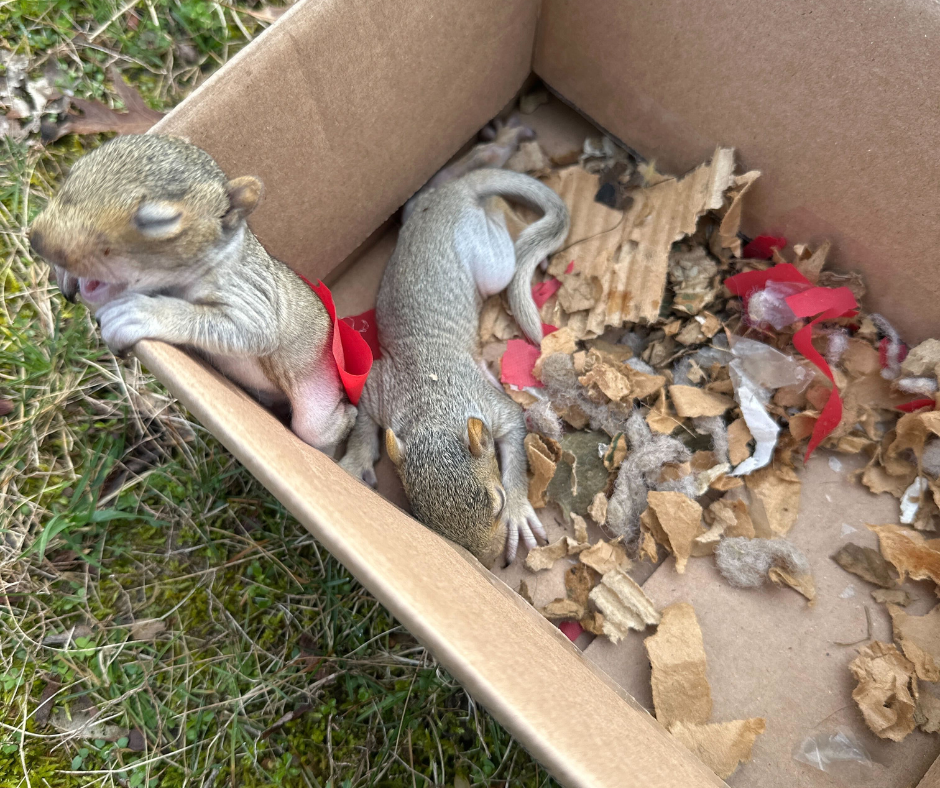 The Two Squirrel Nesting Seasons
The Two Squirrel Nesting Seasons
The Two Squirrel Nesting Seasons
Squirrels are one of the most persistently annoying nuisance animals in the Westchester County area, known for scratching and gnawing their way into attics to build their nests, often ripping up and soiling your insulation in the process. Squirrels are drawn to your home’s attic because it provides them with a safe, warm place shielded from predators and the elements to raise their babies, but did you know squirrels actually have babies TWO times a year? Don’t worry, Westchester Wildlife can help. We can safely and humanely remove both the mother and baby squirrels from your attic space.
When Do Squirrels Have Babies?
Squirrels have two mating seasons, the first stretching from December to February, and the second from June through August. The mother squirrel has a gestation period of around 38 to 46 days, so a month and a half after mating they will give birth to a litter of pups. The first litters of squirrel babies are born between February and April, and then the second litters are born in August or September.
When Do Baby Squirrels Leave the Nest?
Baby squirrels, sometimes called squirrel pups, are born helpless with their eyes closed. At four weeks old, squirrel babies will open their eyes, then explore outside the nest at about six weeks. Once squirrels are 10 weeks old, they are fully ready to be on their own, and the mother squirrel kicks them out of the nest so she can start the mating cycle again. There is a slight difference in this cycle between the first and second litter of the year. The first litter of the year will leave the nest right at 10 weeks, whereas the second litter, born in the late summer, will stay with the mother a bit longer, as they will typically hit maturity in the winter and will need to stay by their mother’s side to survive longer.
Squirrel Nests in Attic
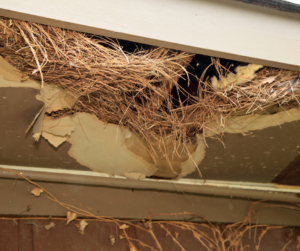 There are two main types of squirrel nests: a drey and a cavity nest. Dreys are the balls of dead leaves, twigs and grass that you often see high up in the bare branches of trees during the winter. Cavity nests are squirrel nests built inside a hollowed-out tree. The tree provides the squirrel with safety and comfort, and sometimes even a food source. Squirrels also have “vacation homes” which are a third type of nest that is used to rest and store food along their scavenging route. Squirrels will often build their nests inside your attic, as your attic provides a very safe, secure place where squirrels can rest and raise their babies in peace, without fear of harsh weather or predators. Squirrel nests inside your attic may be a main nest or a vacation home, but either way, they can cause a lot of damage.
There are two main types of squirrel nests: a drey and a cavity nest. Dreys are the balls of dead leaves, twigs and grass that you often see high up in the bare branches of trees during the winter. Cavity nests are squirrel nests built inside a hollowed-out tree. The tree provides the squirrel with safety and comfort, and sometimes even a food source. Squirrels also have “vacation homes” which are a third type of nest that is used to rest and store food along their scavenging route. Squirrels will often build their nests inside your attic, as your attic provides a very safe, secure place where squirrels can rest and raise their babies in peace, without fear of harsh weather or predators. Squirrel nests inside your attic may be a main nest or a vacation home, but either way, they can cause a lot of damage.
It might sound nice to let a family of squirrels stay in your attic, but in actuality, squirrels are dangerous wild animals, and nesting in your attic can pose a danger to both you and them. Squirrels will chew on wires and wood, rip up your attic insulation, and soil it with their urine and feces. Squirrels might also bring in outside nesting materials, which can react with chewed wires and torn insulation and cause a fire. Squirrels also carry parasites like mites, fleas and ticks, and can spread illnesses like leptospirosis, tularemia and salmonella.
Humane Squirrel Removal in Westchester County
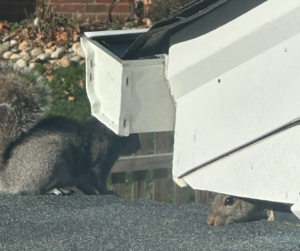 If you have squirrel nests inside your attic, don’t worry, Westchester Wildlife can help. We offer squirrel removal as well as seal-outs and exclusions to prevent the squirrels from re-entering the property. Never attempt to remove baby squirrels yourself, as mother squirrels are very adept at hiding their babies, and you might accidentally leave one in your attic space. Our technicians are trained to safely and carefully remove all squirrels from your attic, and we will set up a trapping program and a one way door to make sure the entire squirrel population is removed before we begin the seal out process.
If you have squirrel nests inside your attic, don’t worry, Westchester Wildlife can help. We offer squirrel removal as well as seal-outs and exclusions to prevent the squirrels from re-entering the property. Never attempt to remove baby squirrels yourself, as mother squirrels are very adept at hiding their babies, and you might accidentally leave one in your attic space. Our technicians are trained to safely and carefully remove all squirrels from your attic, and we will set up a trapping program and a one way door to make sure the entire squirrel population is removed before we begin the seal out process.
Contact Westchester Wildlife today for the best squirrel removal and squirrel nest removal in Westchester County. We also service Dutchess County, NY, Putnam County, NY, and Fairfield County, CT.
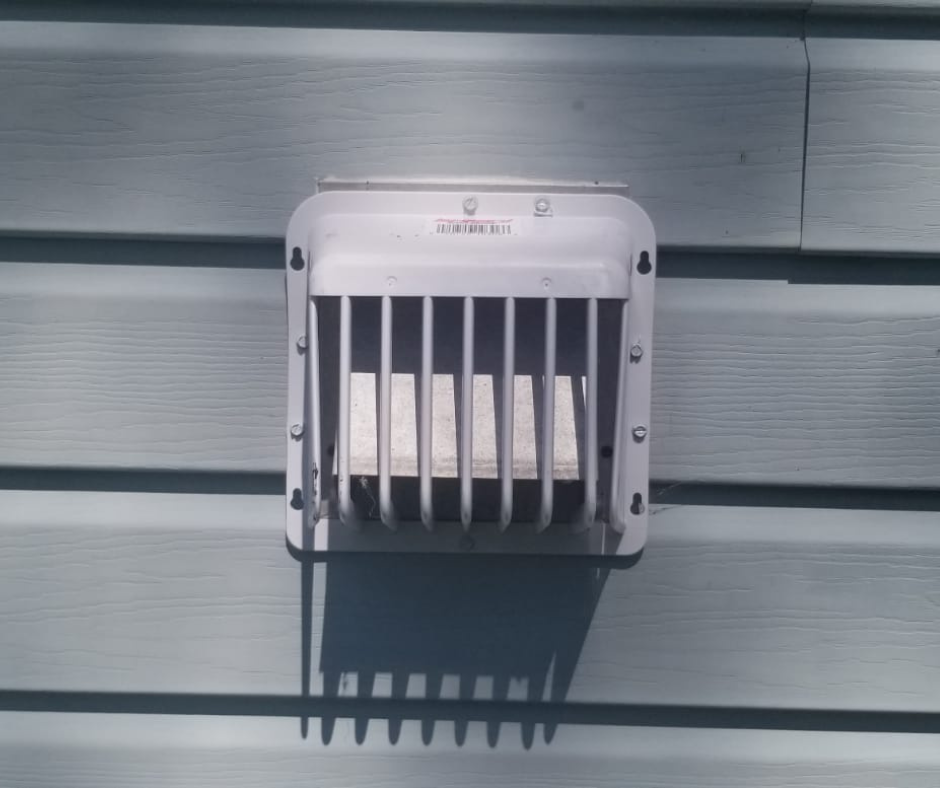 Bird Proofing Your Home This Spring
Bird Proofing Your Home This Spring
Bird Proofing Your Home This Spring
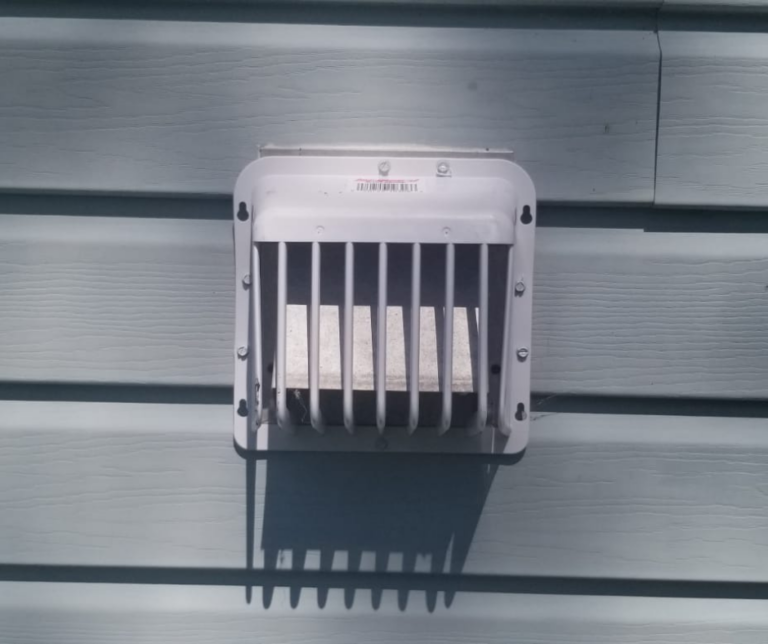
Spring is almost here, and birds have already been causing issues in homes across Westchester County. Birds like pigeons, starlings and sparrows are known to nest inside attic spaces and exterior dryer vents, where they can cause extensive damage to your attic insulation and pose a fire hazard with their nests. Westchester Wildlife can help, we can remove birds from your property as well as provide deterrents to keep these birds away in the future.
Bird in Attic Damage
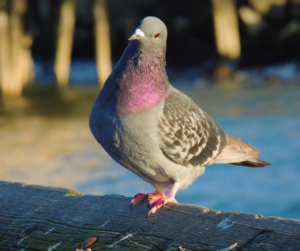 If your roof or soffit has a crack or gap that birds can exploit, they will use it to get inside your home and build a nest in your attic. Birds will often rip up your attic insulation to make their nest, which can lower the effectiveness of the insulation, leading to temperature dysregulation in the home. Birds may also rip out electrical wiring, which can cause a fire hazard. Birds also love to bring in outside nesting material like dead leaves, dead grass, pine needles, straw and twigs, which can also create a major fire hazard. Birds will also leave behind their droppings, which can contain uric acid, which will damage and corrode buildings over long periods of time. Bird droppings are also known to spread the spores that cause the fungal lung infection histoplasmosis. Birds also carry parasites like bird mites, which they can spread to the rest of the house. Birds inside your attic might also make a lot of noise, which can become a real nuisance while you are trying to sleep.
If your roof or soffit has a crack or gap that birds can exploit, they will use it to get inside your home and build a nest in your attic. Birds will often rip up your attic insulation to make their nest, which can lower the effectiveness of the insulation, leading to temperature dysregulation in the home. Birds may also rip out electrical wiring, which can cause a fire hazard. Birds also love to bring in outside nesting material like dead leaves, dead grass, pine needles, straw and twigs, which can also create a major fire hazard. Birds will also leave behind their droppings, which can contain uric acid, which will damage and corrode buildings over long periods of time. Bird droppings are also known to spread the spores that cause the fungal lung infection histoplasmosis. Birds also carry parasites like bird mites, which they can spread to the rest of the house. Birds inside your attic might also make a lot of noise, which can become a real nuisance while you are trying to sleep.
Bird in Dryer Vent Damage
Most homes contain a clothes dryer, equipped with a vent to the outside that blows out hot air. Dryer lint is often caught and blown out this vent in the process. Birds are attracted to the enclosed space that these vents provide, protected from predators and the elements. Unfortunately, birds like pigeons, sparrows and starlings will bring in their dry nesting material, made of dead leaves and twigs. The dry nesting material can block the lint from being blown out and cause a buildup, and the hot air from the dryer reacting with the built-up lint and the dead leaves and twigs can create a major fire hazard. Pigeons, starlings and sparrows will leave behind droppings in these vents, which can corrode the structure over time and spread diseases like histoplasmosis and cryptococcosis.
Dryer Vent Bird Guards
Spring is on the way, so now is the best time to start bird-proofing your home. Your first step should be getting a heavy duty bird-guard installed on your dryer vent. Dryer vents are one of the biggest target areas for pigeons, sparrows and starlings, so installing one of these guards on your home now can save you the trouble of digging out nesting material from this vent later. Don’t worry about installing a bird guard yourself – Westchester Wildlife has you covered. We can install bird guards on your home in Westchester County, Putnam County and Dutchess County NY, as well as Fairfield County and Litchfield County, CT.
Bird Exclusions and Deterrents
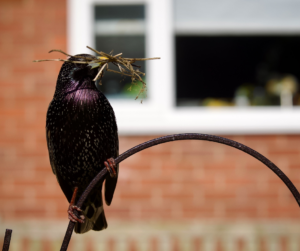 Another great way to bird proof your home this spring is to have a licensed wildlife removal expert like Westchester Wildlife inspect your home for any potential entry points on your roof or soffit. After the entry points have been identified and all birds have been removed, then one of our licensed experts can seal off any cracks or gaps in your roof or soffit, preventing any birds from getting inside.
Another great way to bird proof your home this spring is to have a licensed wildlife removal expert like Westchester Wildlife inspect your home for any potential entry points on your roof or soffit. After the entry points have been identified and all birds have been removed, then one of our licensed experts can seal off any cracks or gaps in your roof or soffit, preventing any birds from getting inside.
For even further protection against birds, you can use commercial products like bird netting and spike strips, which will prevent these birds from even landing on target areas like roofs.
Best Bird Control Near Me
Bird proofing your home this spring is important, as when birds gain entry to the home, they can rip up your insulation, create fire hazards with their nesting material, and spread illnesses like histoplasmosis and cryptococcosis. Westchester Wildlife can help with your bird proofing projects this spring, we can provide you with bird guard installation and our expert technicians can identify and seal any entry points that birds are using to get inside your attic. If birds have soiled or ripped up your insulation, we also offer attic insulation remediation services. Contact us today to get started!
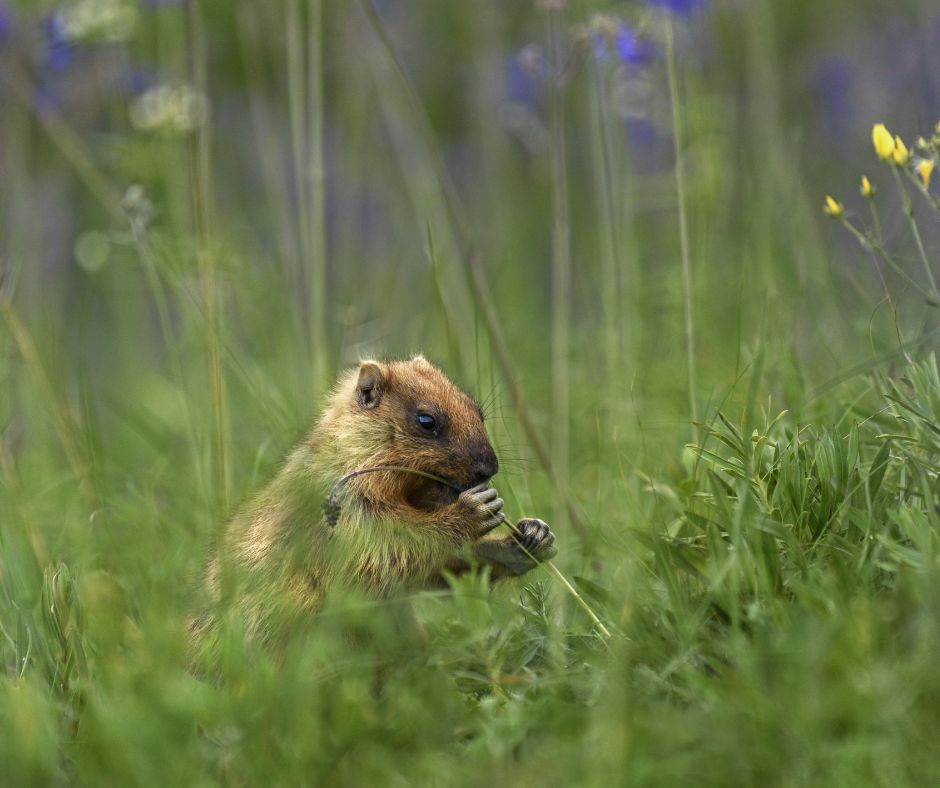 How to Prevent Groundhogs This Spring
How to Prevent Groundhogs This Spring
How to Prevent Groundhogs This Spring
 Groundhogs, also known as woodchucks, are one of the most notorious wildlife you can have in your yard, as once these critters exit hibernation in the spring, they will rip up your lawn, hollow out the ground underneath structures like sheds and decks, and raid your garden for any fresh vegetables you may have. Westchester Wildlife can help, we offer groundhog trapping and removal, as well as wildlife fencing and exclusions to keep these troublesome critters from causing real damage to your property.
Groundhogs, also known as woodchucks, are one of the most notorious wildlife you can have in your yard, as once these critters exit hibernation in the spring, they will rip up your lawn, hollow out the ground underneath structures like sheds and decks, and raid your garden for any fresh vegetables you may have. Westchester Wildlife can help, we offer groundhog trapping and removal, as well as wildlife fencing and exclusions to keep these troublesome critters from causing real damage to your property.
When Does Groundhog Hibernation End?
Groundhogs hibernate for longer than most mammals in New York. Groundhogs will dig themselves deep into their burrow and curl up into a ball, dropping their metabolism, slowing their heart rate and breathing down, and lowering their body temperature significantly. Groundhogs will put on extra fat layers as they prepare for hibernation, usually entering this state around late October, staying dormant until they emerge from hibernation in early March. During the early springtime, it is essential to begin preparing for the arrival of groundhogs, as they will soon be searching for places to build dens for their babies.
Groundhog Damage
Groundhogs are burrowing animals, and they are known to dig out their extensive burrow systems inside your yard, which can hollow out the ground, making it weak and vulnerable to caving in, especially if a lot of weight is placed on it. Groundhogs can also dig their tunnels underneath decks, porches and sheds, which can compromise their structural integrity and lead to these structures sinking into the earth. Groundhogs can even dig their tunnels underneath your home’s foundation, which can cause lead to your foundation cracking and sinking into the ground.
Groundhogs can chew through buried electrical wire, and they can also chew on your outdoor patio tile, which can cause it to crack and break. Groundhogs are also known to dig inside vegetable gardens, to feast on the crops growing inside. When groundhogs dig through your yard and garden, they can disrupt root systems of both your vegetable plants and fruit trees, which can kill these plants.
How To Prevent Groundhog Under Sheds, Decks, Porches and Foundations
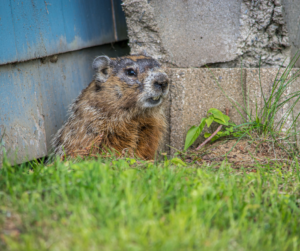 Groundhogs are extremely clever animals that will quickly wizen up to most wildlife harassment techniques, so the most effective method of groundhog prevention is to install wildlife fencing around the areas that you need protected, like a shed, deck, porch or foundation. Wildlife fences can also be installed around the perimeter of the entire yard. Groundhogs are burrowing animals, so making sure these fences are buried at least a foot into the ground is essential.
Groundhogs are extremely clever animals that will quickly wizen up to most wildlife harassment techniques, so the most effective method of groundhog prevention is to install wildlife fencing around the areas that you need protected, like a shed, deck, porch or foundation. Wildlife fences can also be installed around the perimeter of the entire yard. Groundhogs are burrowing animals, so making sure these fences are buried at least a foot into the ground is essential.
Don’t stress about building these wildlife fences yourself, contact Westchester Wildlife. We offer groundhog seal-outs, exclusions, and wildlife barriers/wildlife fencing to prevent these large rodents from damaging your home.
How To Prevent Groundhogs from Eating Your Garden
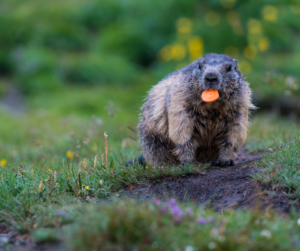 Groundhogs will often dig up and eat the fresh vegetables and fruit from your garden, often killing the plants in the process. If you have a green thumb and take an active interest in keeping up your garden, this can be very frustrating. Thankfully, there are ways to prevent groundhogs from getting inside your garden. Burying a wildlife fence at least a foot deep in the ground around the perimeter of your garden can deter these groundhogs from getting inside. Groundhogs are also drawn to yards with tall grasses and heavy vegetation, so keeping the grass outside your garden cut short and clear of excess plants will keep groundhogs from digging in your yard, as it won’t feel safe.
Groundhogs will often dig up and eat the fresh vegetables and fruit from your garden, often killing the plants in the process. If you have a green thumb and take an active interest in keeping up your garden, this can be very frustrating. Thankfully, there are ways to prevent groundhogs from getting inside your garden. Burying a wildlife fence at least a foot deep in the ground around the perimeter of your garden can deter these groundhogs from getting inside. Groundhogs are also drawn to yards with tall grasses and heavy vegetation, so keeping the grass outside your garden cut short and clear of excess plants will keep groundhogs from digging in your yard, as it won’t feel safe.
Cost of Groundhog Removal
Westchester Wildlife offers groundhog trapping and removal in the Westchester, Dutchess and Putnam counties of New York, as well as in Fairfield County, CT. The cost of groundhog removal is variable, based on various factors including the size of your property and the extent of your groundhog problem. We’d love to hear from you, so contact us today to get started at 800.273.6673!
Groundhog Removal Services Near Me
Groundhogs can be very clever, and can easily avoid traps if you aren’t acutely aware of their patterns and behavior. Thankfully, Westchester Wildlife can help. We offer the best groundhog trapping and removal services for both residential and commercial properties in Westchester, Dutchess and Putnam Counties, NY as well as Fairfield County, CT.
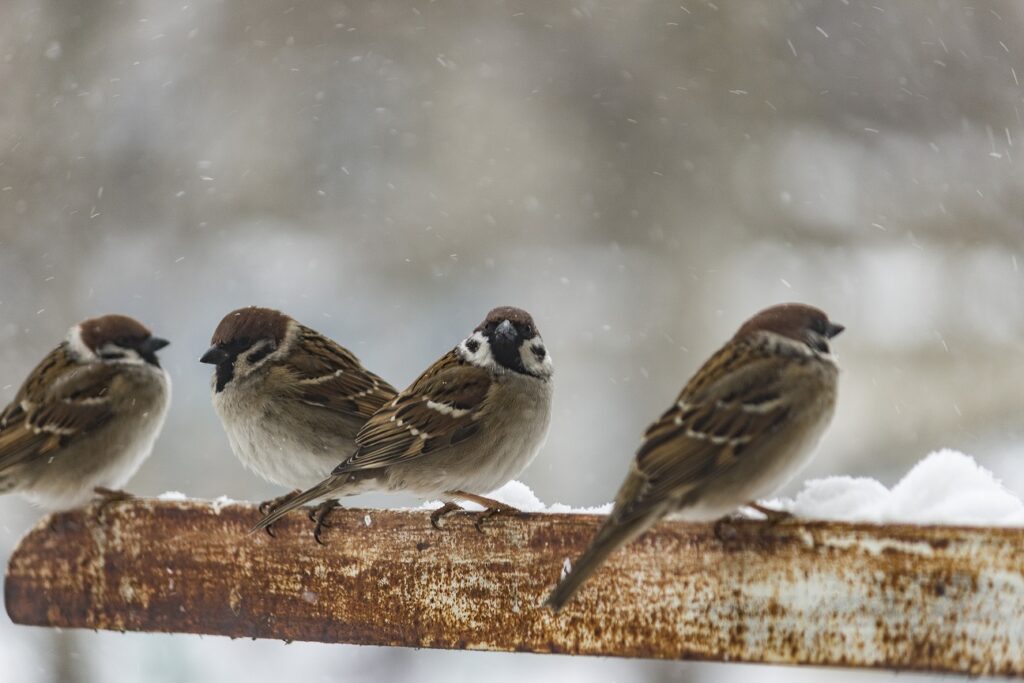 What Happens To House Sparrows In Winter?
What Happens To House Sparrows In Winter?
There are many different species of sparrows in the US, but the house sparrow is the most widespread. These little brown birds are also most often found to be in conflict with humans. They happily live in towns and cities as they are very adaptable and skilled at taking advantage of the opportunities we provide to them.
Keep reading to learn more about the habits of house sparrows in the winter and the conseqences of their cohabitation with humans.
How Do Sparrows Survive The Winter?
During the cold months, house sparrows find their way into all sorts of man-made habitats. We create perfect habitat for them and they thrive on the shelter and food we supply.
The house sparrow stays all winter in the US. These birds may occupy their old nesting sites from previous years, establish new ones, or take over their chosen sites before the arrival of migrating birds in spring, and even usurp nests that the migrating birds have built.
In winter, house sparrows feed on a huge range of foods, from various types of seeds and grains, to discarded food scraps and agricultural crops.
Do House Sparrows Nest In Winter?
House sparrows will most likely build their nests between February and May, and use them throughout the year. In spring and summer, the nest is used to raise young, while in fall and winter, it serves as a place to rest and sleep.
Typically, the nesting season starts in April and lasts until August, but nesting may continue in other months, too.
Where Do Sparrows Nest In Winter?
House sparrows like to make their homes in, on, or near buildings. They prefer to nest in cavities, hollows, dryer and other vents, attic vent louvers, and crevices such as around window-mounted AC units.
Also, awnings, street signs, eaves of the roof, or underneath tiles are their favorite nesting locations.
Wherever they find some space to squeeze in and can make the most of the shelter, house sparrows will move in. They can also take over other birds nests.
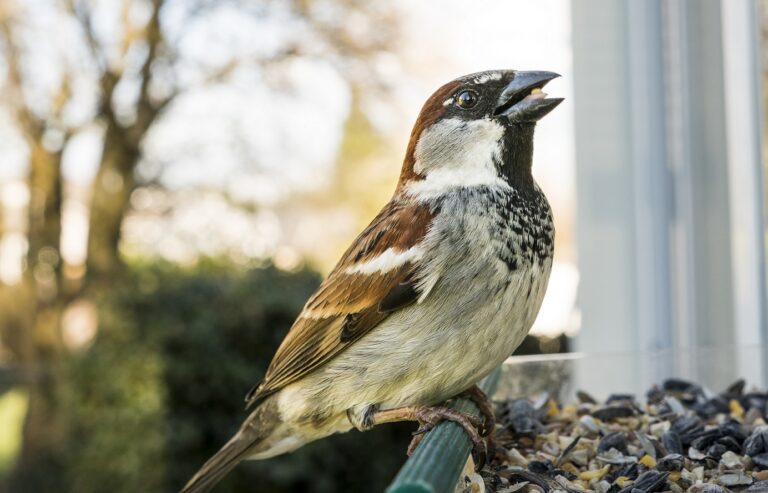
What Problems Do House Sparrows Cause?
Despite their small size, house sparrows are very aggressive. They can cause many problems for native birds as they will attack, harass, and kill them when competing for nesting sites. Sparrows can also destroy their eggs and hatchlings, and take over their food sources from bird feeders.
While on your property, it is only the manner in which these birds accommodate themselves in your home that can cause a problem for you.
Like all birds, sparrows have the ability to cause significant damage to your house, both outside and inside. They seek shelter in enclosed or protected areas and like to build nests that are large and act as a link for their colony and activities.
Their habit of stuffing nesting material in dryer, stove, and fan vents may cause the vents not function properly and prevent further use of the vents, which is a more serious problem.
In addition, sparrows nesting in your house structure could result in the following:
– Damage to roof tiles. Nesting sparrows can dislodge the tiles.
– Bird droppings. Their feces can carry harmful diseases.
– Filthy, unhygienic waste and foul odor. Their old nests may contain rotten eggs and decaying chicks that failed to survive.
– Insects and pests. The material they use to build nests can contain insects and other small pests that can then find their way into your attic and home, causing more problems for you.
How Can You Keep Sparrows Away From Your House?
Therefore, getting rid of house sparrows and their nests from places you don’t want and preventing these birds from building new nests in your house, is the first and best approach.
For this, it’s good to install covers over vents to keep sparrows and other birds out, and check screening over louvers before the birds make their way in. Exclusion methods are particularly useful, such as nets, sheet metal, or hardware cloth in order to block any openings that could serve as potential nesting areas. You may use various deterrents or tactile gels that help prevent roosting and perching.
Always remember to remove the nesting material and make sure that there are no chicks present in the nest before excluding the birds.
If you notice sparrows, or any other nuisance birds nesting or flying on your property, it’s best to have them eliminated immediately.
If your home is located in one of our service areas of Westchester, Dutchess, and Putnam Counties, NY, or Fairfield County, CT, reach out to us for help with our bird removal services. Westchester Wildlife is a top-rated bird removal company in your local area.
Call us today to schedule a bird removal inspection and get a quote with a member of our expert wildlife control team.
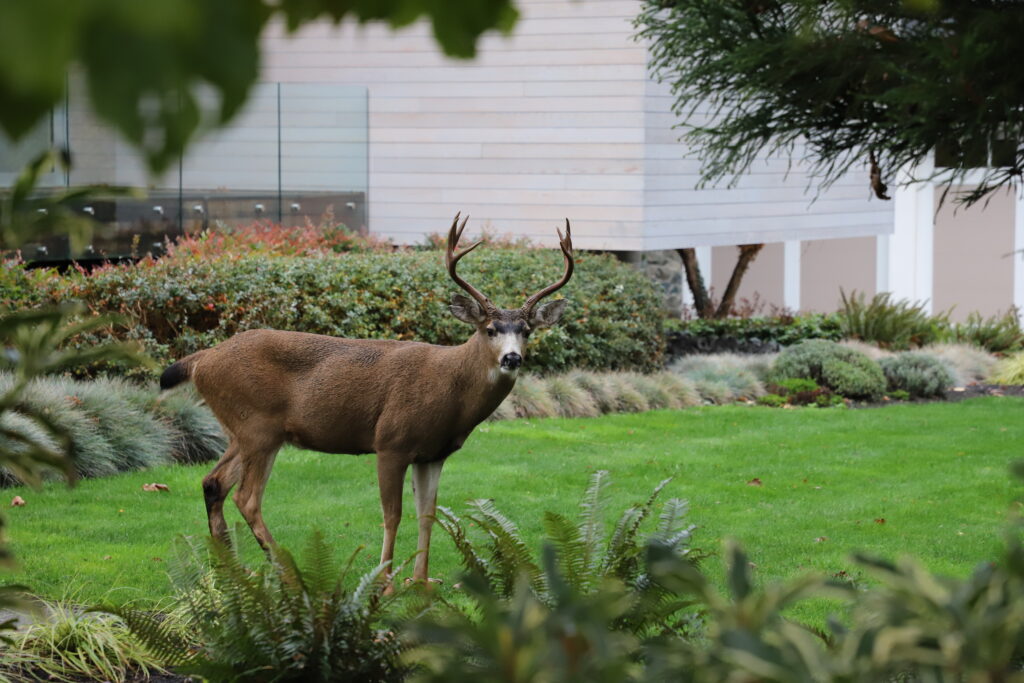 Can Noises Scare Deer Away From Your Yard?
Can Noises Scare Deer Away From Your Yard?
Deer are majestic animals that are pretty to look at if you manage to catch a glimpse of them galloping through the forest. But they can quickly turn into an invasive pest once set loose in your yard. They will destroy your tender crops, leaving plenty of vegetation damage.
This wildlife doesn’t gather and store food for winter, but consumes whatever is available throughout the year. In winter, deer feed on the lower branches of evergreen trees and shrubs, while in summer they forage mainly on garden crops such as tomatoes, lettuce, bulbs, and flowers.
Keep reading as we share a bit of insight into their habits, which you may take advantage of to keep deer out of your property and save your garden from becoming a free buffet.
The best starting point for keeping nuisance deer away is to use scare tactics. There are plenty of ways to deter deer but the perfect place to start is by using sound and targeting their sense of hearing. Try to frighten them using loud noises or whistles, just be careful not to disturb your neighbors.
Are Deer Scared Of Noises?
Deer are shy and skittish but also smart and highly adaptable animals, so you must skillfully target their senses if you want to keep your yard safe from deer.
Their ability to distinguish between natural and unnatural noises in the forest gives them an advantage. Most loud noises that are not the usual everyday sounds of wild animals, will startle deer. Anything that’s unfamiliar to them can throw them off and make them too nervous to come near.
These creatures have funnel-shaped ears that are designed to pinpoint the source and exact direction from which the sound is coming. And it’s not only an advantage for them, but it also allows homeowners to use the precision of deer ears to deter them from the yard and garden.
What Noises Are Deer Scared Of?
If you have a really persistent deer turning your garden into its next feeding spot, using noises as deterrents might work for you.
They will be afraid of loud, banging noises, yelling, or barking dogs. To keep deer from ravaging your property, try using auditory deterrents such as bells, whistles, radios, alarms, and ultrasonic devices to scare them away when you notice them. Introduce motion-activated devices that create startling sounds, preferably in combination with movement or bright light.
Scare deer off before they do too much damage in your yard. Use metal cans, pie pans, or wind chimes suspended by strings as they make noise when they rattle in the wind.
Pinwheels can also repel deer with their noise when they’re attached to branches, fences, or dowels around your yard. The noise, movements, and colors should be enough to startle any deer, at least until it learns there is no real threat. Noise-making deterrents like gas or propane exploders produce loud noises that frighten deer away, and have been used to help protect gardens and crops.
In addition, deer are known to hate ultrasonic pest control devices as they emit high-frequency sounds. Such repellents are a humane and noninvasive option to get rid of deer. Some devices even combine ultrasonic technology with motion sensors and lights, and they work best.
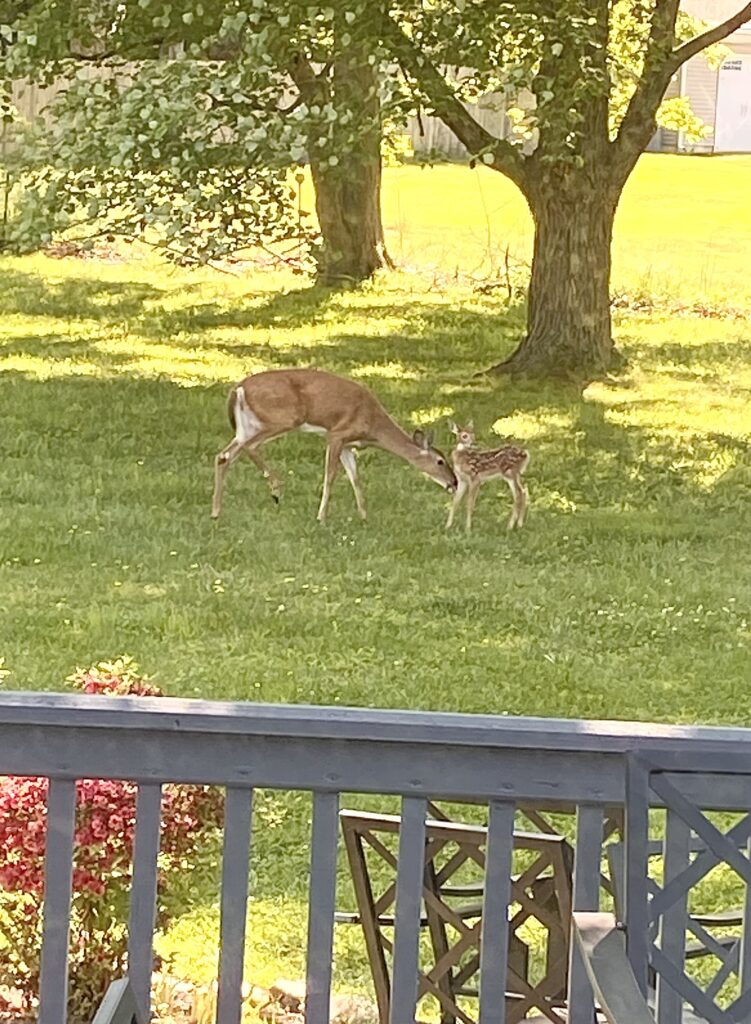
What Frequency Scares Deer Off?
Ultrasonic devices work on deer as these animals are able to hear ultrasonic sounds. Deer can hear at almost the same frequencies as humans, but they are better at determining the direction and cause of each sound they hear.
They can hear high frequency soundwaves, between about 250 and 30,000 hertz, which means they can hear tones that are well above what humans can detect. Their hearing however is most sensitive to moderate frequencies, from 4 to 8,000 hertz. A frequency of 15-25,000 herz is still silent to most people, but it can successfully repel deer from your yard.
Will Deer Come Back After Being Spooked?
Spooked deer will come back to their bedding area, but how soon they return depends on how much something has frightened them. If they can’t identify any danger, they won’t hesitate and will return sooner than if they saw or sensed a human.
On the other hand, the loud noises you use to scare them off will definitely work, but keeping this wildlife away is the hardest part. If they find food scarce in winter, or they liked the veggies you grow in your garden and they designate your yard as their feeding ground, they will be back again.
So if you plan on using sound to keep deer out of your yard, it is advised to change your strategies frequently. These animals can easily adapt to new methods of deterring them, which makes you work overtime to ensure the safety of your property.
Are you experiencing constant problems on your property with wild animals such as deer? To protect your garden and lawn from deer damage, droppings, and mess, it is best to get professional help by contacting a wildlife control specialist.
Westchester Wildlife company can help you choose the right strategy to prevent deer from destroying your garden or yard. You can rely on our wildlife removal and control services, whether you live in Fairfield County CT, or Westchester, Putnam, and Dutchess Counties NY. What’s more, at Westchester Wildlife we are focused on humane and least stressful methods of wild animal removal. So call us today!
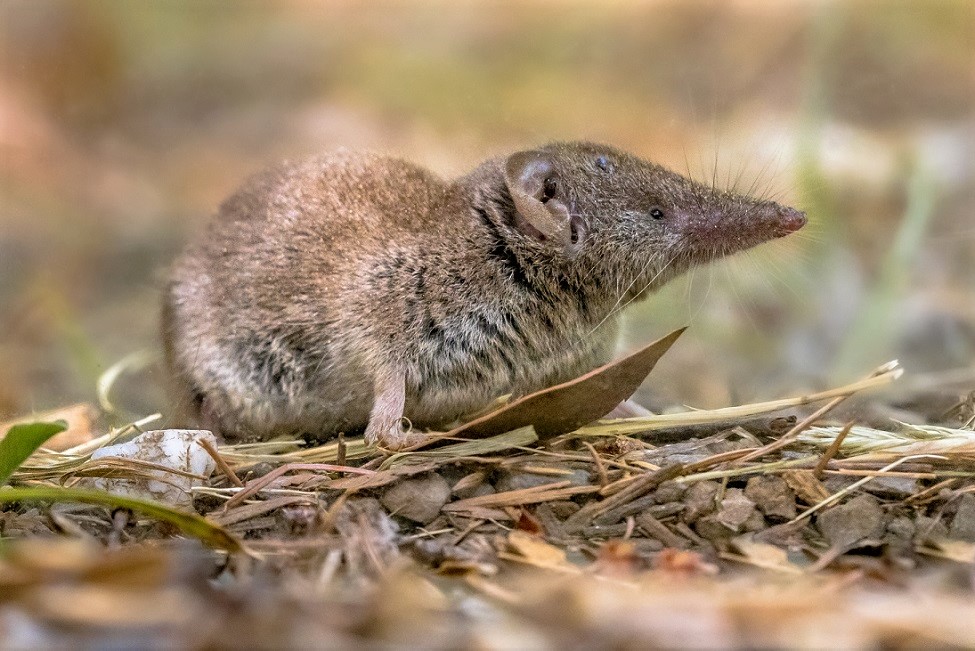 Does A Shrew Make Noise?
Does A Shrew Make Noise?
If you’ve never had a problem with shrews on your property, you will think these tiny mouse-like animals scurrying around are cute. But when a lot of them show up in your home or yard, they quickly become not so cute, especially when you realize that their bites are actually quite venomous.
Shrews are very vocal mammals. They make a lot of noise as they go about their daily routine. When they get into your home where you can hear them all the time, you will soon grow to hate their sounds.
Therefore, if you spot a shrew in your house or yard, you must act promptly to get rid of it. Keep reading to learn in detail about the sounds that shrews make and how to recognize them.
What Kind Of Sounds Do Shrews Make?
Shrews are noisy little creatures that have a diverse repertoire of communication sounds. Their vocalizations are their way of communicating.
By nature, unlike bat sounds, the shrew sounds are low-amplitude, multi-harmonic, broadband, and often modulated.
They make a range of squeaking and chirping calls, as well as faint high-pitched laryngeal twittering calls. Shrews also emit sounds such as clicks, hisses, churls, whistles, barks, buzzes, and short screams.
Shrews usually run along, making short ‘brrrrr’ noises. However, during the wintertime, you won’t be able to hear them that much in the snow on the ground.
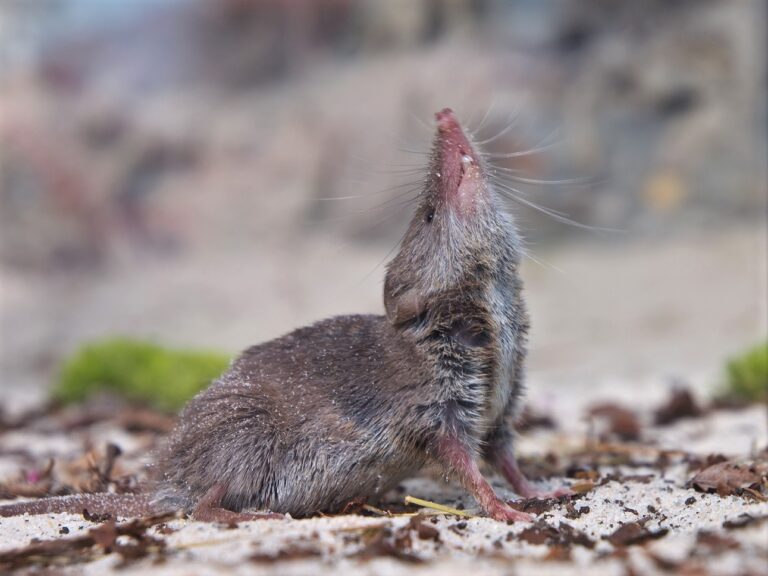
Why Do Shrews Make Noise?
Since shrews are active both during the day and night, you will usually be able to notice the noises they emit. They communicate with a series of different sounds such as squeaks and clicks.
However, just like bats, shrews also make very high-pitched sounds that are beyond the range of human hearing. Especially if you’ve lost some of your ability to hear high frequencies, you may struggle to hear some of their sounds.
High-pitched sounds serve for communication purposes, to converse and communicate within families, and for interactions between mother and young.
Just like bats, shrews use an echo‐based orientation system. But it is simpler, and instead of using it for finding food, they use it to explore their surroundings.
Shrews are animals digging in the ground, so they need to produce a variety of sounds to communicate, navigate, and locate objects and other obstacles in their tunnels. When moving about, especially in new places, they find their way by making high-pitched twittering sounds that bounce off of their nearby surroundings. Their calls are for identifying routes through the new environment, for obtaining information from their surroundings, and for probing habitat types. These are ultrasonic sounds that are emitted for echolocation purposes.
Besides the ultrasonic echolocation sounds made by shrews, there are several other sounds that humans are able to hear, especially when these pests are being territorial. Because shrews are very territorial and aggressive, they can sometimes be heard fighting, and their squeaks and chirps are particularly noticeable in the summer.
Their loud sounds can show fear and aggression when fighting or interacting with other individuals. They also act as an alarm to defend themselves, ward off potential threats, and when the animal is panicking and feels threatened.
Other shrew sounds such as clicks, may occur during courtship. Male shrews will make these noises to attract and court females.
Up to 17 different types of calls have been identified, suggesting that shrews need to communicate something on a regular basis. Otherwise, if they make too much noise for no apparent reason, they risk being found by predators and eaten as they are tiny animals. Most often, the shrews make noise when they are encountering other animals or marking their territory with calls.
Meanwhile, some shrews can be heard making repetitive, low, squeaking noises while they’re lying still in their nests on their own and doing absolutely nothing.
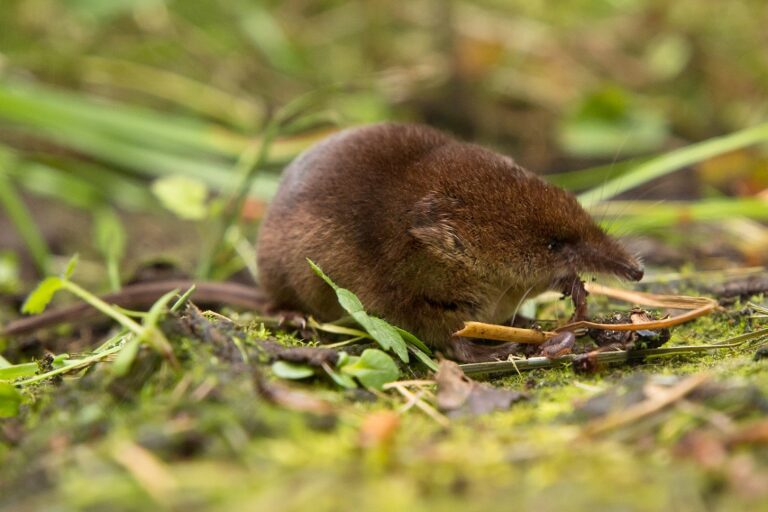
If you frequently hear or notice small creatures running around your landscape, you might have a problem with shrews. Keep in mind that controlling shrews can be a challenge for homeowners, therefore implementing an integrated pest management approach, along with methods such as trapping, baiting, and habitat modification can guarantee the best chance of success.
If you’ve been experiencing issues with shrews on your property, you might need professional help with your shrew trapping and removal. Give our Westchester Wildlife team a call, whether you’re located in Westchester County, Dutchess County, Putnam County, NY, or Fairfield County, CT.
Our exterminators are highly skilled and knowledgeable, and specialize in a wide range of pest and wildlife control services, including getting rid of shrews. Contact us today and let us know how we can assist you!
 Eco-Friendly and Humane Wildlife Deterrent Methods for Your Garden
Eco-Friendly and Humane Wildlife Deterrent Methods for Your Garden
 There are several types of wildlife that you might find destroying your garden, burrowing underneath your plants and eating your fresh vegetables. Groundhogs are known to dig underneath gardens, disrupting root structures and displacing plants. Groundhogs are binge eaters, and will decimate a garden filled with delicious vegetables overnight. Rabbits will also dig into the ground, and they will damage and consume flowers, peas, beans, beets and more. While groundhogs and rabbits are the two most prevalent garden pests, homeowners also often have to contend with squirrels, raccoons, opossums and deer, all of which are omnivores and will stop by your garden for a quick snack.
There are several types of wildlife that you might find destroying your garden, burrowing underneath your plants and eating your fresh vegetables. Groundhogs are known to dig underneath gardens, disrupting root structures and displacing plants. Groundhogs are binge eaters, and will decimate a garden filled with delicious vegetables overnight. Rabbits will also dig into the ground, and they will damage and consume flowers, peas, beans, beets and more. While groundhogs and rabbits are the two most prevalent garden pests, homeowners also often have to contend with squirrels, raccoons, opossums and deer, all of which are omnivores and will stop by your garden for a quick snack. While trapping and removal services can get rid of any current critters causing problems on your property, this doesn’t protect against more animals coming back in the future. You can trap and remove a groundhog, but the next groundhog will come around eventually and decimate your plants. This is why preventative measures for garden nuisance wildlife are so important. One of the most important measures you can take for keeping groundhogs and other animals out of your garden is to install wildlife fencing or wildlife barriers around the perimeter of your yard, garden, or both. Mesh wildlife fencing can prevent critters from gaining entrance, and burying this fencing deep enough in the ground can prevent burrowing groundhogs from digging underneath it. Westchester Wildlife can install wildlife fencing and wildlife barriers anywhere on your property to keep critters from getting in and raiding your garden. We can install these barriers alongside the entire perimeter of your yard, or just along the perimeter of your garden. No matter what your wildlife fencing needs are, Westchester Wildlife can help.
While trapping and removal services can get rid of any current critters causing problems on your property, this doesn’t protect against more animals coming back in the future. You can trap and remove a groundhog, but the next groundhog will come around eventually and decimate your plants. This is why preventative measures for garden nuisance wildlife are so important. One of the most important measures you can take for keeping groundhogs and other animals out of your garden is to install wildlife fencing or wildlife barriers around the perimeter of your yard, garden, or both. Mesh wildlife fencing can prevent critters from gaining entrance, and burying this fencing deep enough in the ground can prevent burrowing groundhogs from digging underneath it. Westchester Wildlife can install wildlife fencing and wildlife barriers anywhere on your property to keep critters from getting in and raiding your garden. We can install these barriers alongside the entire perimeter of your yard, or just along the perimeter of your garden. No matter what your wildlife fencing needs are, Westchester Wildlife can help. Habitat modification is a highly effective strategy for keeping groundhogs, rabbits, and other critters out of your vegetable garden. To begin, it’s crucial to eliminate any potential hiding places. Clear away brush piles, tall grass, and accumulated debris that provide cover for these animals. Regularly mow the lawn around the garden to reduce tall grass and remove any unnecessary vegetation. Removing potential food sources outside the garden is also essential; promptly clean up fallen fruits, nuts, and other edible debris that could attract these critters.
Habitat modification is a highly effective strategy for keeping groundhogs, rabbits, and other critters out of your vegetable garden. To begin, it’s crucial to eliminate any potential hiding places. Clear away brush piles, tall grass, and accumulated debris that provide cover for these animals. Regularly mow the lawn around the garden to reduce tall grass and remove any unnecessary vegetation. Removing potential food sources outside the garden is also essential; promptly clean up fallen fruits, nuts, and other edible debris that could attract these critters.

 Bat houses offer a natural solution to pest control, allowing homeowners to reduce insect populations without relying on harmful chemicals. Bats feed on a wide variety of insects, helping to keep your yard and garden free from pests. In addition, by supporting bat populations, bat houses contribute to maintaining ecological balance. Bats play a crucial role in pollination and seed dispersal, further enhancing biodiversity and the health of local ecosystems.
Bat houses offer a natural solution to pest control, allowing homeowners to reduce insect populations without relying on harmful chemicals. Bats feed on a wide variety of insects, helping to keep your yard and garden free from pests. In addition, by supporting bat populations, bat houses contribute to maintaining ecological balance. Bats play a crucial role in pollination and seed dispersal, further enhancing biodiversity and the health of local ecosystems. There are various types of bat houses designed to meet different needs and preferences. Single-chamber bat houses are simple and ideal for smaller bat populations, while multi-chamber bat houses provide more space and are suitable for larger colonies. Rocket boxes and nursery houses offer specialized designs for different bat behaviors and colony structures. The location of your bat house is critical for attracting bats. Install the bat house at least 12-20 feet above the ground on a pole, building, or tree. Proximity to water sources and the presence of nearby trees for bats to navigate can also increase the chances of occupancy.
There are various types of bat houses designed to meet different needs and preferences. Single-chamber bat houses are simple and ideal for smaller bat populations, while multi-chamber bat houses provide more space and are suitable for larger colonies. Rocket boxes and nursery houses offer specialized designs for different bat behaviors and colony structures. The location of your bat house is critical for attracting bats. Install the bat house at least 12-20 feet above the ground on a pole, building, or tree. Proximity to water sources and the presence of nearby trees for bats to navigate can also increase the chances of occupancy. Installing bat houses offers natural pest control by providing bats with a safe roosting spot. This reduces the need for chemical pesticides, supports local ecosystems, and keeps bats out of your home. Embrace the ecological benefits of bat houses and enjoy a chemical-free solution to pest control. By installing a bat house, you contribute to environmental sustainability and create a healthier habitat for local wildlife. If bats have taken up residence in your attic, Westchester Wildlife can help. Our team specializes in safe and humane bat removal, ensuring your home is bat-free. Contact us at
Installing bat houses offers natural pest control by providing bats with a safe roosting spot. This reduces the need for chemical pesticides, supports local ecosystems, and keeps bats out of your home. Embrace the ecological benefits of bat houses and enjoy a chemical-free solution to pest control. By installing a bat house, you contribute to environmental sustainability and create a healthier habitat for local wildlife. If bats have taken up residence in your attic, Westchester Wildlife can help. Our team specializes in safe and humane bat removal, ensuring your home is bat-free. Contact us at 

 Yellowjackets
Yellowjackets Bald-faced hornets
Bald-faced hornets
 Mice love dry, prepackaged food like cereal, grains, rice, nuts and seeds. If you have this kind of food stored in paper or soft plastic bags, mice will easily chew right through it to get at the food inside. The best way to keep mice away from these products is to store them within a sealed, airtight, hard plastic container. Mice are also often attracted to the home because of left-out pet food. Dog or cat kibble left out in a bowl for long periods of time provide the perfect quick snack for a mouse, so always make sure you put away and store pet food properly.
Mice love dry, prepackaged food like cereal, grains, rice, nuts and seeds. If you have this kind of food stored in paper or soft plastic bags, mice will easily chew right through it to get at the food inside. The best way to keep mice away from these products is to store them within a sealed, airtight, hard plastic container. Mice are also often attracted to the home because of left-out pet food. Dog or cat kibble left out in a bowl for long periods of time provide the perfect quick snack for a mouse, so always make sure you put away and store pet food properly. Mice are natural prey animals, hunted by other animals like
Mice are natural prey animals, hunted by other animals like 
 There are two main types of squirrel nests: a drey and a cavity nest. Dreys are the balls of dead leaves, twigs and grass that you often see high up in the bare branches of trees during the winter. Cavity nests are squirrel nests built inside a hollowed-out tree. The tree provides the squirrel with safety and comfort, and sometimes even a food source. Squirrels also have “vacation homes” which are a third type of nest that is used to rest and store food along their scavenging route. Squirrels will often build their nests inside your attic, as your attic provides a very safe, secure place where squirrels can rest and raise their babies in peace, without fear of harsh weather or predators. Squirrel nests inside your attic may be a main nest or a vacation home, but either way, they can cause a lot of damage.
There are two main types of squirrel nests: a drey and a cavity nest. Dreys are the balls of dead leaves, twigs and grass that you often see high up in the bare branches of trees during the winter. Cavity nests are squirrel nests built inside a hollowed-out tree. The tree provides the squirrel with safety and comfort, and sometimes even a food source. Squirrels also have “vacation homes” which are a third type of nest that is used to rest and store food along their scavenging route. Squirrels will often build their nests inside your attic, as your attic provides a very safe, secure place where squirrels can rest and raise their babies in peace, without fear of harsh weather or predators. Squirrel nests inside your attic may be a main nest or a vacation home, but either way, they can cause a lot of damage. If you have squirrel nests inside your
If you have squirrel nests inside your 

 If your roof or soffit has a crack or gap that
If your roof or soffit has a crack or gap that  Another great way to bird proof your home this spring is to have a licensed wildlife removal expert like Westchester Wildlife inspect your home for any potential entry points on your roof or soffit. After the entry points have been identified and all birds have been removed, then one of our licensed experts can seal off any cracks or gaps in your roof or soffit, preventing any birds from getting inside.
Another great way to bird proof your home this spring is to have a licensed wildlife removal expert like Westchester Wildlife inspect your home for any potential entry points on your roof or soffit. After the entry points have been identified and all birds have been removed, then one of our licensed experts can seal off any cracks or gaps in your roof or soffit, preventing any birds from getting inside.

 Groundhogs are extremely clever animals that will quickly wizen up to most wildlife harassment techniques, so the most effective method of groundhog prevention is to install wildlife fencing around the areas that you need protected, like a shed, deck, porch or foundation. Wildlife fences can also be installed around the perimeter of the entire yard. Groundhogs are burrowing animals, so making sure these fences are buried at least a foot into the ground is essential.
Groundhogs are extremely clever animals that will quickly wizen up to most wildlife harassment techniques, so the most effective method of groundhog prevention is to install wildlife fencing around the areas that you need protected, like a shed, deck, porch or foundation. Wildlife fences can also be installed around the perimeter of the entire yard. Groundhogs are burrowing animals, so making sure these fences are buried at least a foot into the ground is essential.  Groundhogs will often dig up and eat the fresh vegetables and fruit from your garden, often killing the plants in the process. If you have a green thumb and take an active interest in keeping up your garden, this can be very frustrating. Thankfully, there are ways to prevent groundhogs from getting inside your garden. Burying a wildlife fence at least a foot deep in the ground around the perimeter of your garden can deter these groundhogs from getting inside. Groundhogs are also drawn to yards with tall grasses and heavy vegetation, so keeping the grass outside your garden cut short and clear of excess plants will keep groundhogs from digging in your yard, as it won’t feel safe.
Groundhogs will often dig up and eat the fresh vegetables and fruit from your garden, often killing the plants in the process. If you have a green thumb and take an active interest in keeping up your garden, this can be very frustrating. Thankfully, there are ways to prevent groundhogs from getting inside your garden. Burying a wildlife fence at least a foot deep in the ground around the perimeter of your garden can deter these groundhogs from getting inside. Groundhogs are also drawn to yards with tall grasses and heavy vegetation, so keeping the grass outside your garden cut short and clear of excess plants will keep groundhogs from digging in your yard, as it won’t feel safe. 





